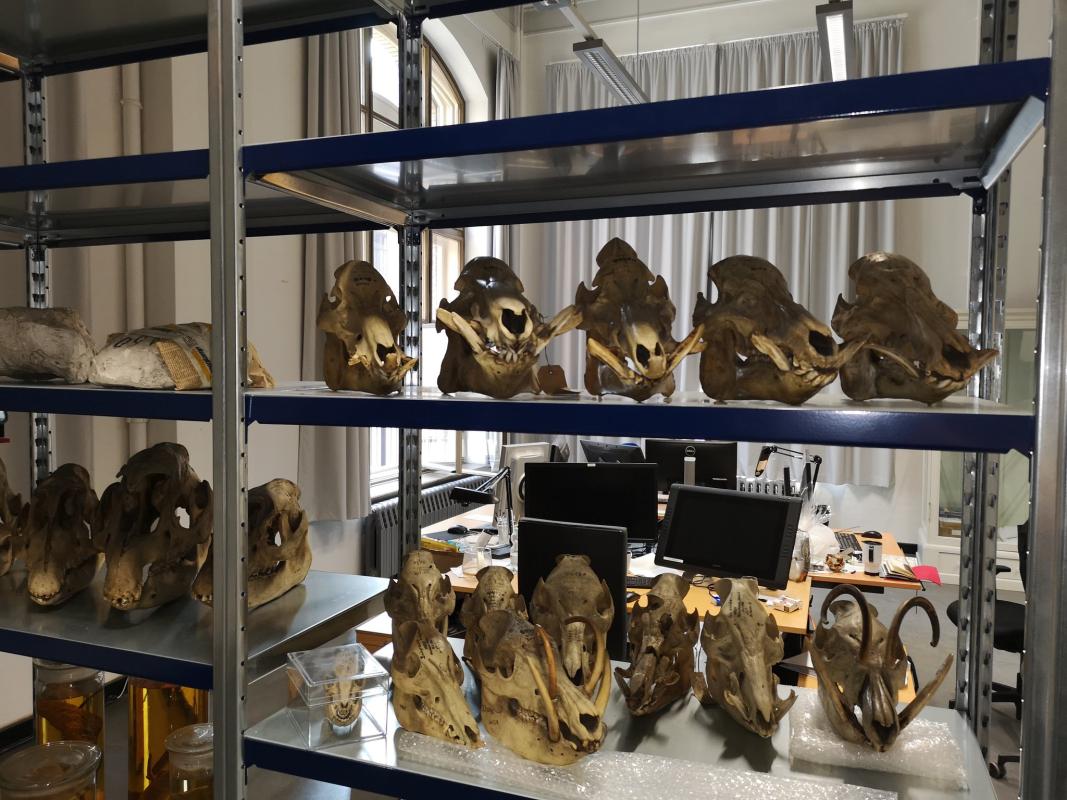Completely isolated from the mainland, islands provide a unique environment for a variety of fascinating plants and animals. Charles Darwin already explored the unique characteristics of insular animals. Darwin's finches, a group of songbirds found only on the Galapagos Islands with different beak shapes depending on their diet, became particularly famous. In addition to bird species, insular large mammals have also attracted special attention from biologists and paleontologists in the past because they have adapted to these special environments in a variety of ways. These include changes in body size (dwarfism and gigantism) and in the morphology of their limbs, skulls, teeth and brain. The causes that lead to changes in brain size and morphology in insular mammals have not yet been investigated in detail. Therefore, Roberto Rozzi, post-doctoral researcher at the Museum für Naturkunde Berlin, will address these important scientific questions.
It is known that island mammals have often evolved smaller brains relative to their closest mainland relatives. This trend is usually observed mainly in domesticated pets and farm animals and is often triggered by the absence of predators and food competitors. In some cases, the structure of the brain also changes, becoming less or more folded. A peculiarity of mammals is that their brains are folded in a particular way that resembles the surface structure of walnuts. These folds occur primarily in intelligent species such as primates.
To analyze in more detail how brains of insular mammals have changed over time and what factors have played a role in influencing their evolution, it is important to consider the relationships between brain size and structure described above. Therefore, this project focuses on the following questions: How are brain folding, brain size and body size related? And which external factors have an influence on this?
To answer these questions comprehensively for the first time, data from fossil and recent species will be integrated. State-of-the-art technologies, such as high-resolution computed tomography and artificial intelligence methods, will be used. In this way, the cavity of the skull (the place where the brain was located during life) can be digitally reconstructed to draw conclusions about the size and folding of the brain. In addition, important ecological and (paleo)geographic data will be collected, and used to investigate the relationship between the environment and brain structure. The main focus of the project is on the study of cloven-hoofed animals, which include pigs, hippos and ruminants. The diverse and widespread cloven-hoofed animals are particularly suitable for this research, as a significant reduction in brain size has been observed in some extinct insular species. The results of the research project will help us better understand the relationship of brain size reduction and brain simplification in island mammals. The knowledge gained may help us better assess the conservation value of the peculiar mammals and provide valuable information to protect them from extinction.
